La Rocca Pg. 14 (people / places)
La Rocca Pg. 15 (people / places)
La Rocca Pg. 16 (people / places)
La Rocca Pg. 17 (places to stay / eat)
La Rocca Pg. 18 (Asphalt Mines)
La Rocca Pg. 19 (Asphalt Mines)
La Rocca Pg. 20 (Churches)
La Rocca Pg. 21 (Churches)
La Rocca Pg. 22 (people/places)
La Rocca Pg. 23 (people/places)
La Rocca Pg. 24 (people/places)
La Rocca Pg. 2 (Santo Spirito)
La Rocca Pg. 3 (San Bartolomeo)
La Rocca Pg. 4 (photos)
La Rocca Pg. 5 (photos)
La Rocca Pg. 6 (photos)
La Rocca Pg. 7 (festa)
La Rocca Pg. 8 (the old ways)
La Rocca Pg. 9 (the old ways)
La Rocca Pg. 10 ("Lu Sand'Andune")
La Rocca Pg. 11 (La Rocca's Sand'Andune)
La Rocca Pg. 12 (Don Donato Bianco)
(MINIERE D'ASFALTO)
and to Joanne deRubeis and Blaise DiPronio for their translations**
Besides the raising of sheep and goats for cheese, meat and wool, which still continues on a smaller scale today , asphalt mining was a significant industry in Roccamorice and the surrounding area. Asphalt had been mined in this area on and off since Roman times. In 1840 Silvestro Petrini of Bisenti, Teramo rediscovered a layer of asphalt in the Maiella area, and by 1844 he had begun the first modern-era industrial establishment in Abruzzo for the manufacturing of bituminous semi-solid, asphalt substances in Gesu Cristo Vallebona near the Lavino River.
Bitumen was the Roman name for an asphalt used as a cement or mortar. It may be crude petroleum, asphalt or tar. It is usually dark in colour and may contain sulphur as well. For years farmers used the material to patch roofs and waterproof their buildings. Shepherds used it to light fires around the "stazzi" (corrals of animals) to keep predators away .
In 1873 after various companies had extracted petroleum from various places in the area, a company called" Anglo-Italiana degli Oli Minerali a Bitumi Limited" was formed and started working a 9 km. square area in the territories of San Valentino and Roccamorice .
For a number of years an Austrian engineer-Signore Arno Reichenback (the miners nicknamed him-"Ruscimbacc") ran the mines along with Ruggiero Petrini (son of Silvestro) who constructed the railroads. The mines grew and more mines were purchased, making this asphalt industry one of the most important in the world.
The mines expanded and grew, assuring bread and work for hundreds of families. Many sites and tunnels were developed in Torretta, San Giorgio, Pilone, Cusano, La Morgia, Foce , etc. Inside the tunnels, holes were drilled in the rock and then stuffed with blasting powder and fuse and the resulting blast loosened the rocks. Some of the mining was done by "open face" mining where machines -"la rusp"(dialect for bulldozer) - would scrape the dirt off the rocks on the sides of the hill before they were blasted to loosen them .
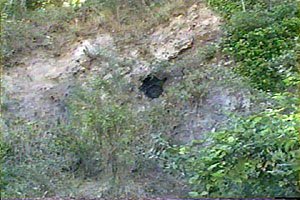
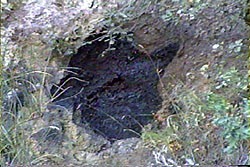
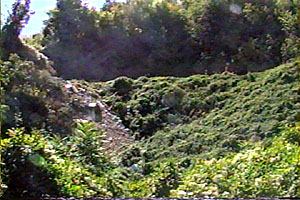
La Parodi Delfino was a roman corporation which owned some of the mines in the area of San Giorgio. It was nicknamed-"Parote". During the Depression in the 1930's, people worked only 2-3 days a week so that everyone would have a job .
Another way of transporting the raw materials was a system called the "Teleferica" or cable-car system . Big steel cables attached to towers carried small wagons full of rocks down to Pianapuccia and on to Scafa and the empty wagons came back on the revolving system . Material was also transported across from La Morgia at Santo Spirito down to Scafa also.

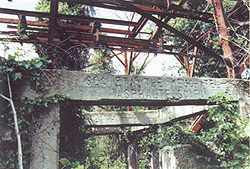
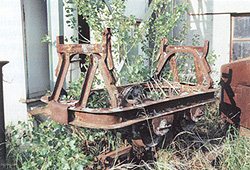
One sad result of all this activity were landslides. One area in particular - La Torretta , near San Giorgio - had severe slides in 1900, resulting in about 100 people abandoning their homes. The Neuchatel Company who owned that area was forced to buy them out and move them elsewhere.
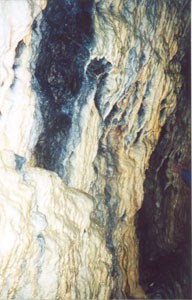
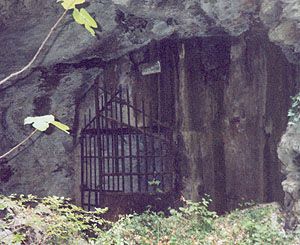
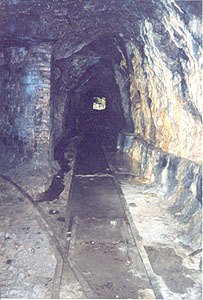
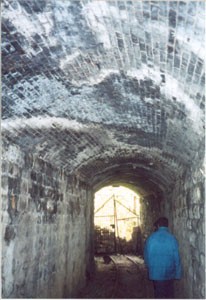
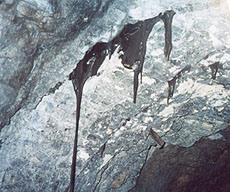
Lu Lette Surnames | La Rocca Surnames | Maps | Family Nicknames
Organizations & Events | Scrapbook | Genealogy Help | Links
Sign Our Guestbook | Home | View Our Guestbook
*DOWNLOAD LU LETTE AND LA ROCCA SONGS*
*DIALECT VERSE ABOUT A LETTESE AND A ROCCOLANO*